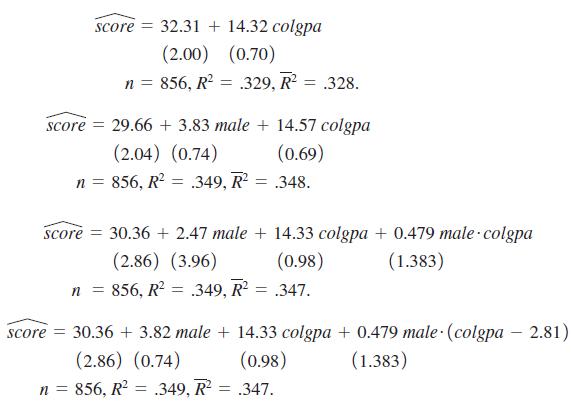The following equations were estimated using the data in ECONMATH, with standard errors reported under coefficients. The
Question:
The following equations were estimated using the data in ECONMATH, with standard errors reported under coefficients. The average class score, measured as a percentage, is about 72.2; exactly 50% of the students are male; and the average of colgpa (grade point average at the start of the term) is about 2.81.

(i) Interpret the coefficient on male in the second equation and construct a 95% confidence interval for bmale. Does the confidence interval exclude zero?
(ii) In the second equation, why is the estimate on male so imprecise? Should we now conclude that there are no gender differences in score after controlling for colgpa?
(iii) Compared with the third equation, why is the coefficient on male in the last equation so much closer to that in the second equation and just as precisely estimated?
Step by Step Answer:

Introductory Econometrics A Modern Approach
ISBN: 9781337558860
7th Edition
Authors: Jeffrey Wooldridge





